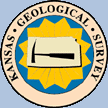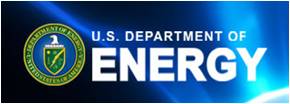

|
Cross Section |
| Cross Section | Description | Build Applet | |
Work is partially supported by the U.S. Department of Energy (DOE) National Energy Technology Laboratory (NETL) under Grant Number DE-FE0002056.
"Correlation of petroleum reservoirs is a fundamental task in reservoir characterization used to establish the geometry of the reservoir and strata surrounding it and to delimit the distribution of flow units that comprise the reservoir. Correlations are primarily accomplished via construction of cross sections through the reservoir using wireline logs where depth patterns, trends, and surfaces define probable continuity within the reservoir between well locations. The correlations are validated through analyses of fluids recovered, flow tests, and possibly seismic surveys, in the later case if the reservoir is sufficiently thick to be seismically resolvable. Cross sections display the log curves at various scales and, to be effective, should show formation and reservoir tops, correlation surfaces, intervals of tests, perforations for production, and intervals that are considered flow units that are correlatable and connected between wells." GEMINI Project
NOTE: In order to plot multiple well/locations the user must either reduce the the number of well/locations that are presented at one time if the data is over a long depth range or to reduce the depth range of each well/location. A memory usage dialog is presented in both applets so the user can see how much memory the program is using on their PC.
The Cross Section Project can be saved anywhere on the user's PC and the cross section control file can be any name but the filename that is provided must be a proper filename string, i.e. no spaces between words or peculiar characters. The cross section maintains the well list and the data that is generated from this program in the same directory the Cross Section Control XML file is saved. The Cross Section Control File maintains the location and filename of the data. Each well/location will be assigned a unique id generated from the date and time. The unique id becomes the prefix to all the data for each well/location. This way the program maintains the data within the program. The LAS version 3.0 Files are used to build the cross section only, but not used in any archival mode.

The build applet allows the user to use a modified Profile Plot to select plot tracks, i.e. LAS curves, rock composition, colorlith plot track combinations and to set the depth range of the data to plot. Like the Profile Applet the user has access to other data types,
Each well/location saves a Log ASCII Standard (LAS) version 3.0 File with only the data that the user needs to create the Profile Plot on the Cross Section and 2 Extensible Markup Language (XML) Files for the Stratigraphic Units (Formation Tops) and PfEFFER Flow Units changes.
The Profile applet saves the original well/location information in an "archive" mode, in other words the data that is original presented in the original LAS file is presented in the LAS version 3.0 file. The Cross Section LAS File only saves the data that is needed to plot the well/location profile on the cross section plot, it is a subset of the original LAS file. The Cross Section allows the user to modify the Stratigraphic Units and PfEFFER Flow Units within the plot, but it does not update the "archived" LAS version 3.0 file that may be used to create the cross section plot. The XML Files cross section project will be accessed from the Profile Plot Applet to allow the user to read the modified XML Files and import that data into the "archive" LAS version 3.0 File.

The web application is being designed to save the data to the PC using the Log ASCII Standard (LAS) version 3.0 developed by the Canadian Well Logging Society . This version provides a means to collect all the geological data in one file. Although the LAS 3.0 Format has default data types, the user can add their own data types to the file provided they use the primary section types, i.e., Parameter, Definition and Data whenever possible, which are briefly paraphrased below, 1
Reference:
(1) LAS 3.0 Log ASCII Standard Document #1 – File Structures by
Canadian Well Logging Society:
http://www.cwls.org/las_info.php
Author: John R. Victorine jvictor@kgs.ku.edu

